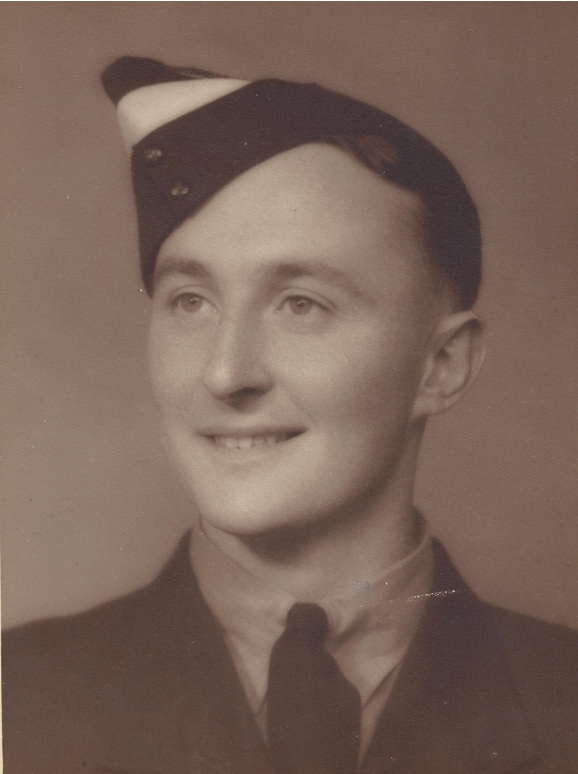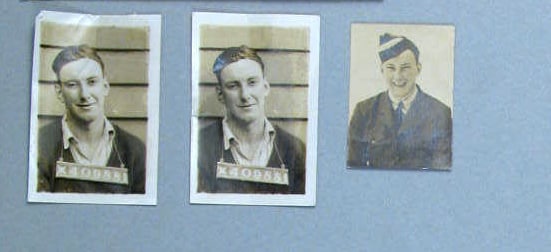In remembering the ultimate sacrifice made by Richmond players during the wars that Australia fought in, the Club has always listed the names of Les Lee, Bill Nolan, Artie Harrison, Bill Cosgrove and Bill Garvie.
But what about the men of the reserves, or thirds, or our VFA era, or Club officials, who died at war?
Throughout the past century their names have faded away . . . until now.
Three years ago, I started a search to find the names of those Richmond men, who represented the Club at lower levels and died at war.
Searching online newspapers, the Club minute books, and the annual reports, I've come across eight more names to add to our list.
The players below also made the ultimate sacrifice for their country and they must, from now on, be mentioned arm-in-arm with the five above-mentioned senior players.
We must no longer ignore them, simply because they didn't play senior football. We must now embrace them into our war-time history.
8 new names. 8 war Tigers.

Arthur Owen ‘Ginger’ Quinn
Born: 1875, Richmond
Died: Nov 15, 1916, France
Age: 39
Rank: Private (service number 4780)
Buried: Bulls Road Cemetery, Flers, Picardie, France
Born in Richmond, Arthur Quinn began his junior career with St Ignatius, before debuting in Richmond’s 1898 VFA season. He played seven games and kicked seven goals that year.
A driver by occupation, he enlisted in the war on April Fool’s Day (April 1) 1916 and served with the 12th Reinforcement 22nd Battalion.
He was taken on strength into the battalion on October 7, 1916, but was killed in action, in the field, just over a month later.
“And so Arthur Quinn has travelled”, Frank Sheedy wrote in The Richmond Guardian, “across the farthest and loftiest mountain into the far country beyond the mists whence no traveller ever returns.”
The eulogy ended with: “As a footballer, he was as tenacious a follower as ever expended abundant energy in the game; he gave a bump, a real bump, and was always ready to take a bump in good spirit.”
John Oswald ‘Ossie’ Jennings
Born: October 13, 1920, Hamilton
Died: July 24, 1942, Egypt
Age: 21
Rank: Corporal (service number VX5382)
Buried: El Alamein war cemetery, Egypt
Always listed in the Club’s minute books and newspaper articles as ‘Ossie’ Jennings, he participated in practice matches for the Tigers in 1940, and was signed by them in mid-April, 1940. He played at least three games for the Richmond seconds that year.
On May 18, 1941, the Richmond players, officials and staff met at the Richmond pavilion to bid farewell to Jennings, on his journey to war.
His service record has not been digitised, nor accessed, and as such, further information on his service is not available at this moment.
The Age reported on August 12, 1942 that “regret has been expressed at the death in action of O. Jennings, a former player”.
On August 18, 1942, the Richmond committee noted his death in the Club’s minute books.
Frank Percy Stamford
Born: April 29, 1923, Richmond
Died: December 7, 1943, New Guinea
Age: 20
Rank: Private (service number V200396)
Buried: Lae War Cemetery, Papua New Guinea
Born in Richmond, he was the winner of the 1941 Richmond Recruits Best and Fairest (which was a precursor to Richmond thirds/under 19s).
His occupation was junior clerk for ‘John Sharp and Sons’ timber merchants in South Melbourne.
Frank enlisted on November 27, 1941 and joined the 26/46 Australian Infantry Battalion.
He was killed in action in New Guinea.

Richard ‘Dick’ John Power
Born: February 6, 1923, Barfold.
Died: January 27, 1944, Werder Germany
Age: 20
Rank: Warrant Officer (service number 409590)
Buried: Berlin War Cemetery
Formerly of Xavier College, he signed to play with Richmond on his first visit to the Club on September 24, 1940.
In November 1941, ‘The Argus’ newspaper lists him, along with three other players, under the headline Richmond Footballers Enlist.
He joined the Air Force for ‘air operations’.
His father would write in 1946, “He did, I think, 23 raids, 14 on Berlin, but in his letters never mentioned flying. He also refused to have his photo taken.”
Richard piloted the Lancaster aircraft JB 637, which was shot down and crashed in Stuecken. All seven crew members died.
A resident of Stuecken reported that the aircraft crashed on his land and all on board were killed instantly. The resident would later attempt to claim from the East Republic government for the damage to his land.
Although his plane crashed on January 27, it took until November for him to officially be declared dead. Months of investigation as to what happened, and how it happened, caused great distress.

Ralph James Ayers
Born: August 1, 1920, East Prahran
Died: December 20, 1943, Frisian Islands
Age: 23
Rank: Flight Sergeant (service number 409881)
Buried: Lost at sea, somewhere in the North Sea.
Ralph played at least two games for the Richmond seconds in 1939 and 1940.
His occupation was printer and book binder, and he came from Prahran College and Prahran Technical School.
As Flight Sergeant for No. 149 Squadron, he undertook an operational flight on the night of December 20, 1943. It took off at 5.19pm, with the target being mine-laying operations off the Frisian Islands.
The Stirling Mark III BK 798 failed to return from the flight. There were seven men on board, with Ralph Ayers the captain.
“I am able to tell you that none of the crews engaged upon the same operation, saw anything of what may have occurred to your son’s aircraft”, the Air Force wrote in March 1944 to his father.
Months later, they wrote again: “The report states that all efforts to find any trace of your son’s aircraft or to establish whether the bodies of any members of the crew were ever recovered for burial, have proved unsuccessful.
In view of this complete lack of evidence, it is now concluded that your son and his comrades were lost at sea”.
For years after Ayers’ death, his family placed a heartbreaking ‘In Memoriam’ notice in The Argus, which read: “Proud and constant are the memories of our dearly loved only child. Ralph James, pilot, R.A.A.F, missing over Holland. December 20, 1943. Today, tomorrow, always. (Mum and Dad)”.

Salton is the goal umpire on the far right of the photo in the coat and hat.
Alexander Salton
Born: 1871, Richmond
Died: September 10, 1916, France
Age: 45
Rank: Private (Service Record 3934)
Buried: Estuaries Communal Cemetery
Alexander Salton, a tailor by trade, played for Richmond from 1886-1889, and in 1892, for a total of 25 games and seven goals. He also represented Fitzroy in 1889-1890 and Carlton in 1891.
After his retirement as a player, Salton became a goal umpire in the league football competition.
On September 25, 1915, a soldiers’ team played Carlton, the league’s premiers. Richmond players Arthur Danks and Jack Sheehan represented the soldiers’ team, with Alexander Salton officiating as the goal umpire.
When Salton enlisted in the AIF on August 6, 1915, he was 44 years old. The following day, he goal- umpired his only Richmond match and then, a fortnight later, his last official VFL match.
He was scheduled to join the 60th Battalion, but because he suffered from varicose veins, was admitted to hospital. As a result, he was not present at the Battle of Fromelles, where the 60th Battalion suffered 757 casualties from a strength of 887.
After being discharged from hospital, he joined the Battalion, as they were so decimated. Five days later, however, he was shot in the stomach, and he subsequently died in hospital.
A medallion, struck by the Richmond Football Club in 1888 and presented to Salton at the end of that season, was discovered 110 years later in a Hawthorn antique shop, and now resides with this author.
Alexander Salton is the only VFL umpire to have died in military service.

1889 team photo- O'Loughlin is in the centre holding the football.
Patrick O'Loughlin
Born: circa 1868, Richmond
Died: August 26, 1916, in action at Mouquet's Farm, France.
Age: 48
Rank: Private, 24th Battalion
Nicknamed ‘Toots’, O'Loughlin played 85 games for Richmond from 1887-1892 in the VFA and captained the Club for 18 games in the 1889 season. His occupation on his service record was ‘wool classer’. His death was listed in the 1916 Richmond Annual Report.
O'Loughlin was in the trenches during the Battle of Mouquet's Farm, when he was hit by a shell and buried alive. Four fellow servicemen tried to dig him out, but were unsuccessful. Two were killed in the process. For 14 years, O'Loughlin's body laid buried under the debris and ground from that battle. Then, on November 22, 1930, his widow received a letter from the Officer of Base Records.
In part it read: “I am now in receipt of advice that during the course of exhumation work in the vicinity of Pozieres , the Imperial War Graves Commission were successful in recovering the remains of this soldier (Patrick O'Loughlin), which have since been interred with every measure and care in Plot 37, Row “B”, Grave 8 of Serre Road Cemetery No. 2”.

Herbert Ivar Martin
Born: 1918, Trafalgar
Died: May 17, 1941, Bathurst.
Age: 23
Rank: Private
Herbert Martin never made it to war.
At a training camp in Bathurst in 1941, he died when the Bren gun carrier he was in crashed through a bridge and down 15 feet into a deep culvert.
Herbert had played for Richmond Reserves in 1939.
His nephew reached out to me last year with this information: “His medals were sent to my father in the mid-50s. I think a service medal and the pacific star. I used to wear them on Anzac Day, when I was a Boy Scout. Thanks for your fine work here, you have brought him alive. No wonder the Tigers are such a big part of our family.”
Find. Your. Men.
The full list of Richmond senior, reserves, thirds, training players and officials, who went to war, can be found via the link below:



